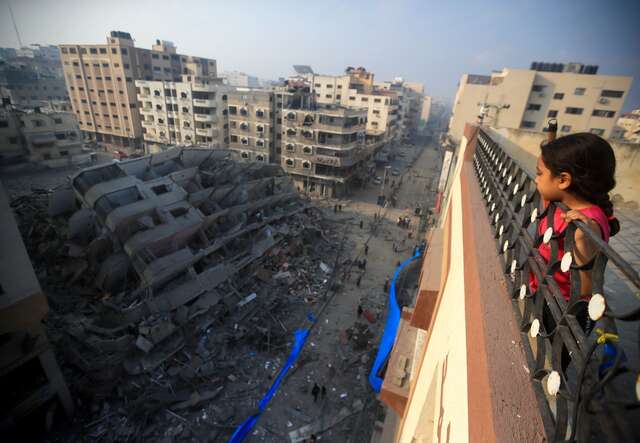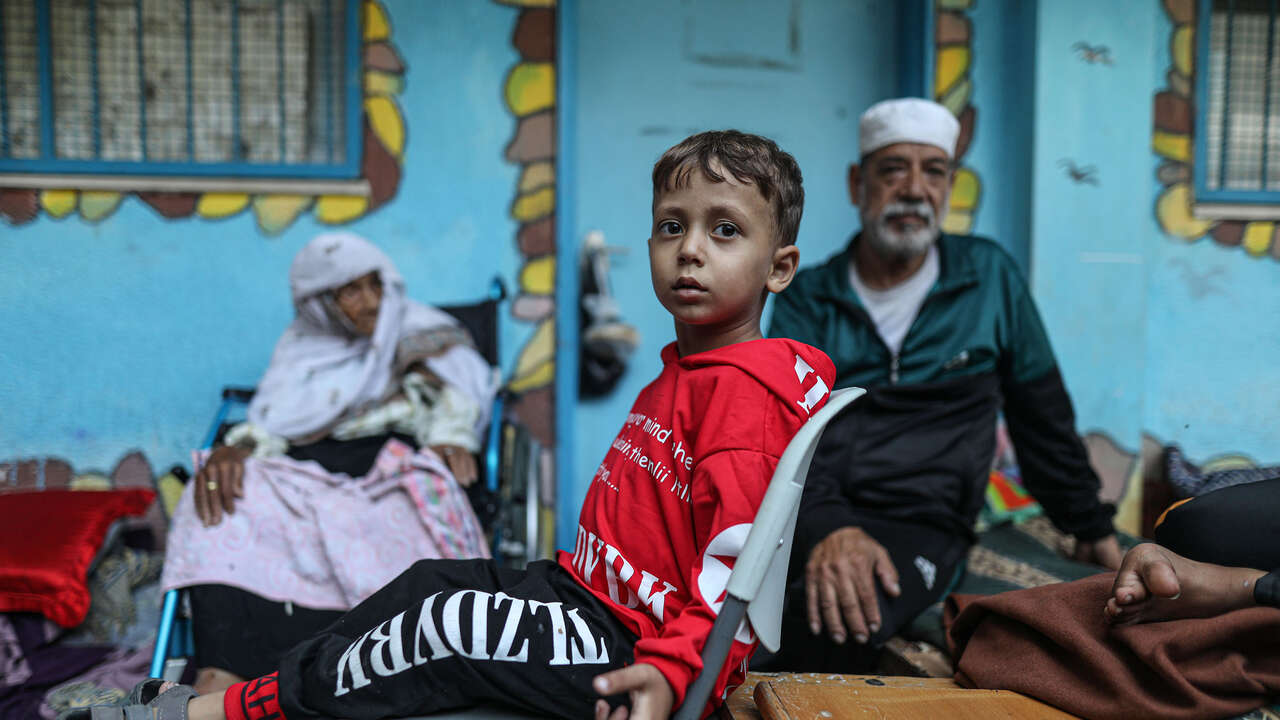As the conflict between Israel and Hamas continues, Palestinian civilians are bearing the brunt of the trauma.
Attacks on hospitals, limited humanitarian access, and blockades on vital medical supplies have significantly hindered the capacity of Gaza’s health care facilities to provide essential treatment to those in need. Some 2 million Palestinians–-half of whom are children–-lack access to safe water, food and vital medical services. They face peril and disaster every day in Gaza.
What is happening in Gaza?
On October 7, 2023, following a deadly attack by Hamas on southern Israel, Israeli forces initiated airstrikes and ground operations in Gaza.
The conflict has resulted in severe destruction and widespread death and displacement throughout Gaza. 1.7 million Palestinians, nearly 80% of the population, are estimated to be internally displaced; many have been displaced several times over. 134 hostages remain held in Gaza.
Only 12 of Gaza’s 36 hospitals are even partially functional. Medical staff continue to treat patients with limited access to medical supplies.
Find out more about the crisis in Gaza.
How is the war affecting Gaza’s health system?
The health system in Gaza has been severely undermined as a result of the assault on its infrastructure, compounded by shortages of vital supplies and medical professionals. Despite this crisis, health care professionals tirelessly work in overwhelmed health care facilities, endeavoring to deliver care to patients in need.
Health services are overwhelmed
More than 29,000 Palestinians have been killed and another 70,000 have been injured since October 2023. Hundreds of thousands urgently need mental health support due to distress from destruction and displacement.
The war has left Palestinians without adequate access to food or safe water. An Integrated Food Security Phase Classification (IPC) food security analysis shows that 100% of Gaza’s population are at imminent risk of famine, further driving medical needs.
Gaza is now the deadliest place for civilians in the world.
“These healthcare facilities are not built for mass casualty. And in fact, no hospital in the world is built for this kind of sustained severity of mass casualty, nor could any be able to sustain it,” says IRC senior emergency health advisor Dr. Seema Jilani, who deployed to Al Aqsa Hospital in Middle Gaza as a member of the IRC’s emergency medical team.
Al Asqa is understaffed and the hospital has been forced to shut its maternity ward. Pregnant women are being referred to Al Awda Hospital, which is farther away, posing additional travel risks.
As Gaza’s health care system crumbles, the toll of civilian casualties, injuries, and displacements continues to escalate. The only path to ensuring the safety of these individuals lies in putting an end to the violence.

Dr. Seema Jilani, IRC Senior Emergency Health Technical Advisor and Pediatrician, treats a child at Al Aqsa Hospital. Medical experts of the first Emergency Medical Team (EMT) deployed in partnership with the Medical Aid for Palestinians (MAP) and the IRC to Gaza have reported harrowing injuries and evidence of serious malnutrition at the hospital where they are treating an unprecedented influx of casualties from Israel’s military bombardment.
Photo: Sami Thabet for MAP
Shortage of medical supplies
The Israeli blockade of food, water, fuel, and essential medicines and supplies is inflicting immense suffering on Palestinian civilians. These challenges impede the delivery of life-saving aid and jeopardize humanitarian efforts.
The ongoing conflict has resulted in the displacement of 1.7 million Palestinians, including crucial health care professionals. The imposed restrictions on movement, forced displacement, and personal tragedies have severely hindered the capacity of Palestinian healthcare workers to provide essential medical aid to the overwhelming number of people in need.
Humanitarian access to northern and central Gaza has declined due to delays at Israeli checkpoints, heightened military activity in central and southern Gaza, and threats to humanitarian personnel and sites. These challenges impede the delivery of life-saving aid and jeopardize humanitarian efforts.
Attacks on hospitals and humanitarians
More than 600 incidents of violence against, or obstruction of access to, health care have been recorded in Gaza since the outbreak of violence in October.
An attack on an ambulance approaching the Al Aqsa hospital killed four humanitarian aid workers on January 18th, shortly after an IRC emergency medical team was forced to evacuate the hospital due to escalating violence in the region.
More than 160 aid workers have been killed—making Gaza the most dangerous place for aid workers in the world. Nearly all Palestinian aid workers have been displaced.

Hospitals in Gaza are struggling to cope with the level of injuries and shortages of supplies. Only 12 of Gaza’s 36 hospitals are partially functional.
Photo: Mohammed Zaanoun/Middle East Images/AFP via Getty Images
Violations of international humanitarian law
According to International humanitarian law (IHL) hospitals, ambulances, and their personnel, should not be attacked. Protecting those with medical needs during armed conflicts.
Attacks on healthcare and humanitarian workers not only put lives at risk but also prevent the delivery of lifesaving services to communities in crisis. Unfortunately, this is the reality currently faced by Palestinian civilians in Gaza.
International organizations have called for an immediate and sustained ceasefire in Gaza and for all parties involved to respect international humanitarian law. They have also appealed for immediate humanitarian assistance to address the urgent needs of the displaced and injured. In response, several countries have pledged aid and assistance to Gaza, but much more is needed to address the scale of the crisis.

Displaced Palestinians walk through their destroyed neighborhood in Gaza during a temporary ceasefire to check on their homes and collect any items that remain intact.
Photo: Ashraf Amra/Anadolu via Getty Images
How is the war in Gaza affecting children?
The crisis in Gaza has left a devastating impact on over 1 million children. Essential supplies are dwindling rapidly, homes lie in ruins, and families are being torn apart. Over 12,000 children have lost their lives, while thousands more remain missing.
Roughly 1,000 children in Gaza have suffered the loss of one or both of their legs, often undergoing amputations without anesthesia, and will need ongoing medical care throughout their lives.
Amid this crisis, wounded children often arrive at medical facilities feeling scared and alone, lacking the comforting presence of their families. The high number of children without surviving family members seeking medical care has led to the creation of a new acronym – “WCNSF” (Wounded Child No Surviving Family).
With 95% of Gaza’s population lacking access to safe water and Gaza’s water and sanitation and health care systems battered by airstrikes, young children face heightened risk of infectious and waterborne diseases like cholera and typhoid, as well as chronic diarrhea.
In addition to physical injuries, the conflict has taken a toll on the mental health and well-being of these young survivors.

Children and women represent 70% of the more than 29,000 Palestinians that have been killed since October.
Photo: Mohammed Abed/AFP via Getty Images
How is the IRC supporting Palestinians?
The IRC is closely monitoring and assessing the situation in the occupied Palestinian territory (oPt). The IRC is deploying emergency medical teams, in partnership with Medical Aid for Palestinians (MAP), to Gaza.
In addition, the IRC has procured 47 metric tons of pharmaceuticals and medical supplies and is working to distribute supplies to hospitals and clinics in Gaza.
The IRC is also supporting partners to deliver food, medical supplies and pharmaceuticals, and to provide critical services in emergency shelters including healthcare, psychosocial support and cash assistance for people to meet their basic needs.
The IRC’s response in oPt draws on our global experience and expertise in emergency response, as well as our longstanding presence in the region. Throughout 2022, IRC teams across Syria, Lebanon, Jordan, Iraq, Yemen and Libya helped 6.3 million people.

Medical supplies procured by the International Rescue Committee (IRC) arrive in Gaza. The IRC procured 47 metric tons of pharmaceuticals and other medical supplies. The supplies are distributed to hospitals and clinics to support critical health and medical services.
Photo: IRC
How can I support Palestine?
The IRC is working with partners to deliver critical emergency aid to families in Gaza and conflict zones around the world. Donate now to support our critical work. We are on the frontlines providing critical aid to crisis-affected people in more than 50 countries, including places on the 2024 Emergency Watchlist.
Read more about the top 10 crises the world can’t ignore in 2024 and download the full 2024 Emergency Watchlist report for profiles of all 20 crisis countries on the IRC’s list.
link

